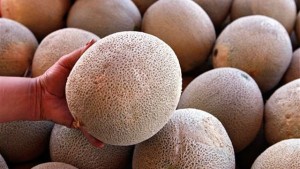George Eustice, DEFRA’s newly appointed Minister of State, told the British Meat Processors Association’s annual conference in London that meat manufacturers – and food businesses at large – must be freed from the “burden” of audits.
Eustice argues the need for fewer audits was one of the key findings to come out of Professor Chris Elliott’s report into 2013 horsemeat scandal. By the end of 2015 the government hopes to have finalised a strategy that paves the way for fewer inspections from both retailers and government agencies.
Consumer trust in food safety is at an all time low
Thanks to wholesale media coverage of some notable cases of food fraud and breaches of food safety, we are living in an age of major consumer scepticism. The public wants to see tighter regulations on the food industry and it’s easy to see how the call for reduced audits could be perceived as a step backwards, not forwards.
It’s a stance that’s difficult to begrudge. Little has been done to ratchet-up traceability and safety measures since horsegate.
One thing that most food businesses agree on is the need for food safety procedures to be more streamlined. Paper-based checks are easy to falsify, annoying to complete and time-consuming to review. Eustice appeared to recognise as much when he noted that a greater use of technology must be central to any plans to reduce the incidence of audits.
Any government strategy to remove unnecessary burdens from food businesses will be warmly received. But food businesses must remember their obligation of safety to the end consumer. Technology that offers cloud integration presents the opportunity for food businesses to share safety data with one another on an open platform, paving the way towards transparent food chains.
Inspections and audits are not synonymous with safety. Beyond sharing data amongst companies, share it with everyone – especially consumers.
Three years ago, a group of us came out with a paper we could all (mostly) agree with and got it published. The main points were:
- food safety audits and inspections are a key component of the nation’s food safety system and their use will expand in the future, for both domestic and imported foodstuffs., but recent failures can be emotionally, physically and financially devastating to the victims and the businesses involved;
- many outbreaks involve firms that have had their food production systems verified and received acceptable ratings from food safety auditors or government inspectors;
- while inspectors and auditors play an active role in overseeing compliance, the burden for food safety lies primarily with food producers;
- there are lots of limitations with audits and inspections, just like with restaurants inspections, but with an estimated 48 million sick each year in the U.S., the question should be, how best to improve food safety?
- audit reports are only useful if the purchaser or food producer reviews the results, understands the risks addressed by the standards and makes risk-reduction decisions based on the results;
 there appears to be a disconnect between what auditors provide (a snapshot) and what buyers believe they are doing (a full verification or certification of product and process);
there appears to be a disconnect between what auditors provide (a snapshot) and what buyers believe they are doing (a full verification or certification of product and process);- third-party audits are only one performance indicator and need to be supplemented with microbial testing, second-party audits of suppliers and the in-house capacity to meaningfully assess the results of audits and inspections;
- companies who blame the auditor or inspector for outbreaks of foodborne illness should also blame themselves;
- assessing food-handling practices of staff through internal observations, externally-led evaluations, and audit and inspection results can provide indicators of a food safety culture; and,
- the use of audits to help create, improve, and maintain a genuine food safety culture holds the most promise in preventing foodborne illness and safeguarding public health.
Audits and inspections are never enough: A critique to enhance food safety
30.aug.12
Food Control
D.A. Powell, S. Erdozain, C. Dodd, R. Costa, K. Morley, B.J. Chapman
http://www.sciencedirect.com/science/article/pii/S0956713512004409?v=s5
Abstract
Internal and external food safety audits are conducted to assess the safety and quality of food including on-farm production, manufacturing practices, sanitation, and hygiene. Some auditors are direct stakeholders that are employed by food establishments to conduct internal audits, while other auditors may represent the interests of a second-party purchaser or a third-party auditing agency. Some buyers conduct their own audits or additional testing, while some buyers trust the results of third-party audits or inspections. Third-party auditors, however, use various food safety audit standards and most do not have a vested interest in the products being sold. Audits are conducted under a proprietary standard, while food safety inspections are generally conducted within a legal framework. There have been many foodborne illness outbreaks linked to food processors that have passed third-party audits and inspections, raising questions about the utility of both. Supporters argue third-party audits are a way to ensure food safety in an era of dwindling economic resources. Critics contend that while external audits and inspections can be a valuable tool to help ensure safe food, such activities represent only a snapshot in time. This paper identifies limitations of food safety inspections and audits and provides recommendations for strengthening the system, based on developing a strong food safety culture, including risk-based verification steps, throughout the food safety system.











